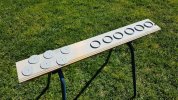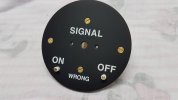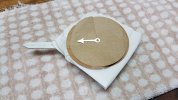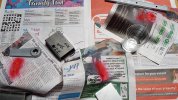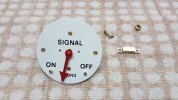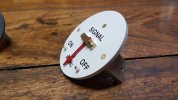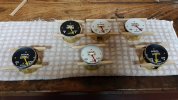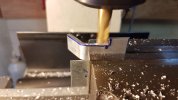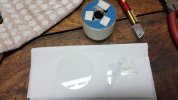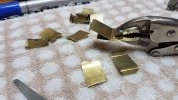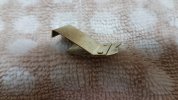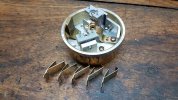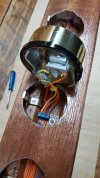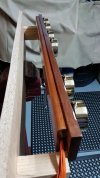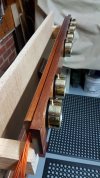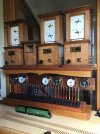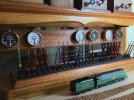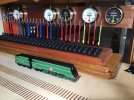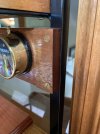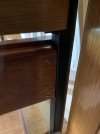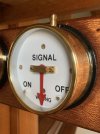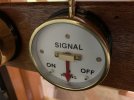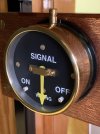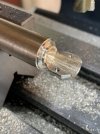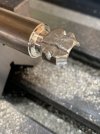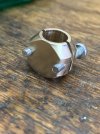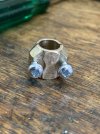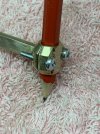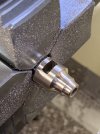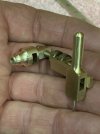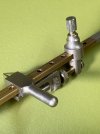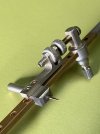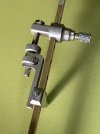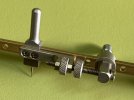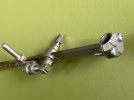David Waite
Western Thunderer
The next items to be made were the six Flange Rings for the rear of the casings, these I made out of Aluminium and bored their ID to give a Interference fit onto the OD of the Brass casings at their rear edge.
The Aluminium plates were drilled and then bored.
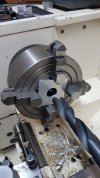
The corners of the Aluminium plate were cut off by hacksaw then turned down to the required size.
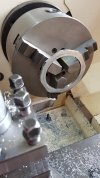
I find a parting tool is as good or better than a machine bit for Aluminium when light pressure is required so as not to move the job and also gives a great finish, any pressure on the rings by the jaws of the chuck would cause their distortion so they were held by what I call a loose clamping force.

All done

One face of each Flange Ring was cleaned up on some wet and dry to remove any imperfections then a coat of Etch primer applied followed by a top coat of Semi Gloss Black. The Brass Casings were given a final polish and degreased with some Prepcoat the Flange Rings were then pressed on to the rear of their casings then each Casing was heated in the oven then a couple of coats of a Brass Gloss clear coat applied to stop tarnishing and keep them shiny.
The round hole that can be seen in the board was for the mechanism of a instrument to sit into and being supported by its Face plate on the surface of the board, this is how I held them while working on the face plates during various stages of their assembly.
I don't know how I managed without my Black & Decker Work Mate in the days of old.
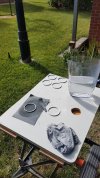
The Aluminium plates were drilled and then bored.

The corners of the Aluminium plate were cut off by hacksaw then turned down to the required size.

I find a parting tool is as good or better than a machine bit for Aluminium when light pressure is required so as not to move the job and also gives a great finish, any pressure on the rings by the jaws of the chuck would cause their distortion so they were held by what I call a loose clamping force.

All done

One face of each Flange Ring was cleaned up on some wet and dry to remove any imperfections then a coat of Etch primer applied followed by a top coat of Semi Gloss Black. The Brass Casings were given a final polish and degreased with some Prepcoat the Flange Rings were then pressed on to the rear of their casings then each Casing was heated in the oven then a couple of coats of a Brass Gloss clear coat applied to stop tarnishing and keep them shiny.
The round hole that can be seen in the board was for the mechanism of a instrument to sit into and being supported by its Face plate on the surface of the board, this is how I held them while working on the face plates during various stages of their assembly.
I don't know how I managed without my Black & Decker Work Mate in the days of old.


